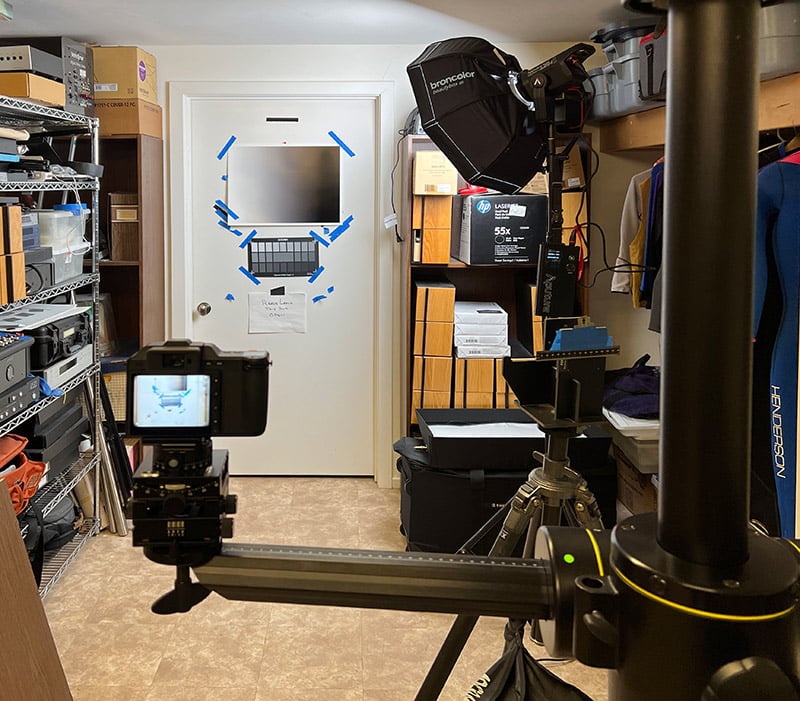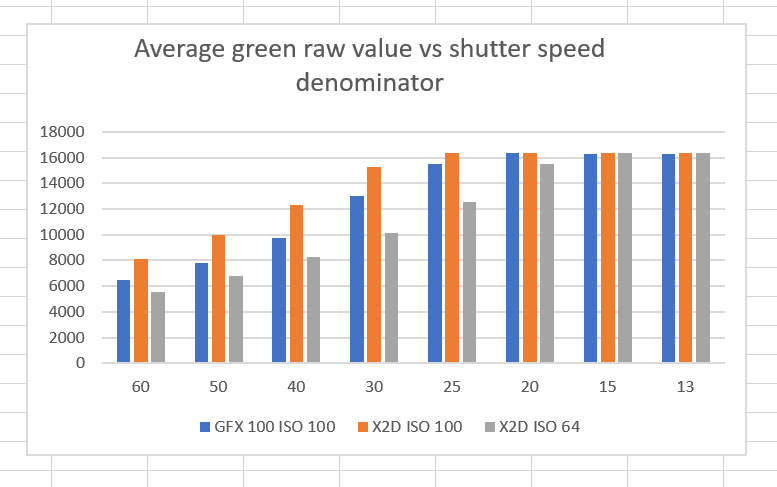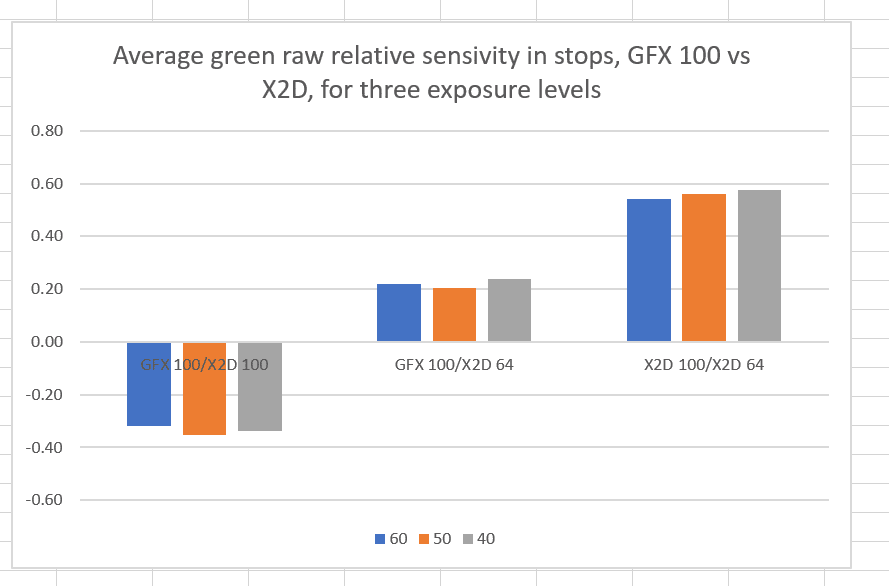This is the first in a series of posts on the Hasselblad X2D 100C camera and the XCD lenses. I only have one XCD lens, the 38mm f/2.5. Whether I get more or not depends on how much I like the camera and the 38. You will be able to find all the posts in this series by looking at the righthand column on this page and finding the Category “X2D”.
The Fuji GFX 100 and GFX 100S have a base ISO of 100. The Hasselblad X2D, which seems to have the same sensor, has a base ISO of 64. How can that be?
I can think of two possibilities, which are not mutually exclusive.
- Hasselblad allows a greater deviation from linear sensor response than Fuji.
- The Hasselblad color filter array (CFA) blocks more light than the Fuji CFA.
I set up a test:
- Camera on Foba stand — GFX 100 and X2D
- Aputure LED set to 5500 K with diffuser
- Leica 90mm f/2 Apo-Summicron M ASPH lens
- Electronic shutter for both cameras
- f/2
- ISO 100 for GFX
- ISO 64 and 100 for X2D
- Measured brightest patch in Sekonic/XRite step wedge using RawDigger
The results:
Saturation is strong at 1/25 for the X2D at ISO 100, mild at 1/25 for the GFX at ISO 100, and at mild at 1/20 for the X2D at ISO 64.
Looking at the relative sensitivities in stops for the three shortest exposures:
- When both cameras are set to ISO 100 (the leftmost set of bars), The GFX 100 is about a third of a stop less sensitive than the X2D.
- The X2D at ISO 64 is about 0.57 stops less sensitive than the same camera is at ISO 100. So the relative ISO calibration of those two stops is off by about a tenth of a stop. You wouldn’t see the effects of that in real world photography.
- When the X2D is set to ISO 64 and the GFX is set to ISO 100, the GFX 100 is about 0.2 stops more sensitive than the X2D.
So the reduced base ISO is achieved through a combination of things. There’s a real loss of sensitivity of 0.2 stops from the GFX 100, which is a lot less than the 0.67 stops you’d expect from the ratio of the two ISOs. A tenth of a stop of that difference comes from the relative calibration of ISO 64 and ISO 100 in the ‘blad. The rest might come from the CFA, it might come from taking small liberties with linearity, or it might come from both.
There seems to be less here than meets the eye.
Note that this accuracy of this test depends on the timing of the electronic shutter speeds on the two cameras being identical. In the past, I have found those shutter timings to be very accurate.



Fascinating. So my question is the dynamic range issue. Is the ‘blad higher DR and can you test that? Is it the same sensor and the software is limiting based on Sony contract with the two manufacturers?
I will be testing for dynamic range.
Not really about sensor sensitivity, but anyway.
Amateur Photographer magazine (one of the very few sites with consistency and experience) recently tested a pre production X2D. Not to their liking was that the rear display does not tilt sideways thus making vertical shots cumbersome. In my opinion, when the sensor vertical and horizontal measurements have a 100:133 ratio and 100 megapixel, then there is next to no reason to hold the camera in a vertical position when shooting. What do you think?
Also on their list of negatives was that the EVF housing obstructs the flip screen. I had the same problem on my Sony A cameras and solved it by unmountig the rear part of the EVF housing. Anyway, I seldom use the EVF and I had hoped that Hasselblad would do away with the EVF. Would save weight and money and make the camera smaller. Old Victor H. would have liked it, I am sure. And you?
I rotate the camera for portrait orientation shots.
I haven’t looked closely at the EVF, but I will.